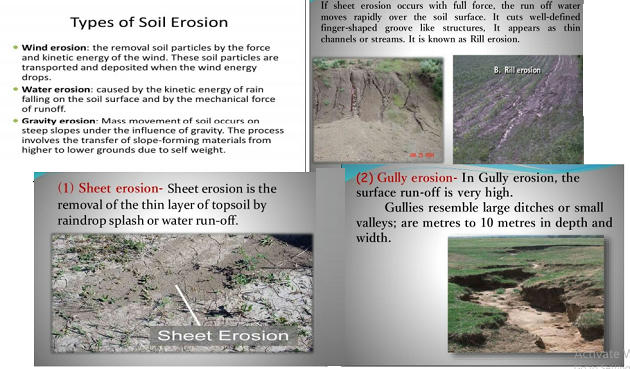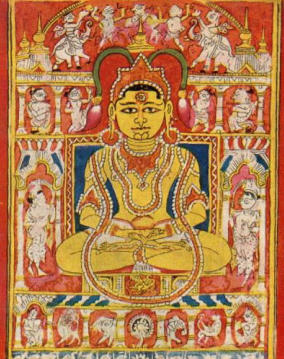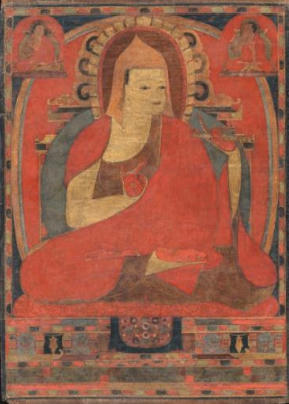Table of Contents
MCQ 1
Which of the following remedial measures is/are adopted to reduce soil erosion?
- Mixed Cropping
- Crop Rotation
- Shifting Cultivation
Select the correct answer using the code given below.
(a) 1 and 2 only
(b) 2 only
(c) 1, 2 and 3
(d) 1 and 3 only

- Soil erosion is essentially aggravated by faulty practices. Over -grazing and shifting cultivation in many parts of India have affected the natural cover of land and given rise to extensive erosion.
- Contour building, Contour terracing, regulated forestry, controlled grazing, cover cropping, mixed cropping and crop rotation are some of the remedial measures which are often adopted to reduce soil erosion.
- Mixed Cropping – Mixed cropping is a system of sowing two or three crops together on the same land, one being the main crop and the others the subsidiaries.
- Crop rotation – It is a method of farming where a number of different plants are grown one after the other on a field so that the soil stays healthy and fertile.
- Mixed cropping, also known as polyculture, inter-cropping, or cocultivation, is a type of agriculture that involves planting two or more plants simultaneously in the same field, interdigitating the crops so that they grow together. In general, the theory is that planting multiple crops at once saves space since crops in the same field might ripen at different seasons, and provides a wealth of environmental benefits.
- Documented benefits of mixed cropping include the balance of input and outgo of soil nutrients, the suppression of weeds and insect pests, the resistance of climate extremes (wet, dry, hot, cold), the suppression of plant diseases, the increase in overall productivity, and the management of scarce resources (land) to the fullest degree
- Tribal groups in the northeastern Indian states of Arunachal Pradesh, Meghalaya, Mizoramand Naga land and the Bangladeshi districts of Rangamati, Khagrachari, Bandarban and Sylhet refer to slash-and-burn agriculture as jhum or jhoom cultivation. The system involves clearing land, by fire or clear-felling, for economicallyimportant crops such as upland rice, vegetables or fruits. After a few cycles, the land’s fertility declines and a new area is chosen. Jhum cultivation is most often practiced on the slopes of thickly-forested hills. Cultivators cut the treetops to allow sunlight to reach the land, burning the trees and grasses for fresh soil. Although it is believed that this helps fertilize the land, it can leave it vulnerable to erosion. Holes are made for the seeds of crops such as sticky rice, maize, eggplant and cucumber are planted. After considering jhum’s effects, the government of Mizoram has introduced a policy to end the method in the state. Slash-and-burn is typically a type of subsistence agriculture, not focused on a need to sell crops globally; planting decisions are governed by the needs of the family (or clan) for the coming year.
- Slash-and-char is an alternative to slash-and-burn that has a lesser effect on the environment. It is the practice of charring the biomass resulting from the slashing, instead of burning it as in the slash-and-burn practice. The resulting residue matter charcoal can be utilized as biochar to improve the soil fertility.
MCQ 2
- Jains trace their history through a succession of twenty-four victorious saviors and teachers known as Tirthankaras, with the first being Mahavir swami
- Major Jain festivals include Paryushana and Daslakshana , Mahavir Jayanti, and Diwali.
- anekantvada establishes the multiple god theory in jainaism
Choose the correct ones :
(A) Only 3
(B) 1 & 2
(C) Only 2
(D) All are correct
- Many-sided reality (anekāntavāda)
Main principle of jainism is anekantavada or anekantatva.
- The second main principle of Jainism is anekantavada or anekantatva. The word anekāntavāda is derived from anekānta (“not one ended, sided”, “many-sidedness”, or “manifoldness”) and vada (doctrine, way).
- The anekantavada doctrine states that truth and reality is complex and always has multiple aspects. Reality can be experienced, but it is not possible to totally express it with language. Human attempts to communicate is Naya, explained as “partial expression of the truth”. Language is not Truth, but a means and attempt to express Truth.
- From Truth, according to Mahavira, language returns and not the other way around. One can experience the truth of a taste, but cannot fully express that taste through language.
- Any attempts to express the experience is syāt, or valid “in some respect” but it still remains a “perhaps, just one perspective, incomplete”. In the same way, spiritual truths are complex, they have multiple aspects, and language cannot express their plurality, yet through effort and appropriate karma they can be experienced
- The Jain Agamas suggest that Mahavira’s approach to answering all metaphysical philosophical questions was a “qualified yes” (syāt).
- These texts identify anekantavada doctrine to be one of the key differences between the teachings of the Mahavira and those of the Buddha.
- The Buddha taught the Middle Way, rejecting extremes of the answer “it is” or “it is not” to metaphysical questions.
- The Mahavira, in contrast, taught his followers to accept both “it is” and “it is not”, with “perhaps” qualification and with reconciliation to understand the Absolute Reality.
- Syādvāda (predication logic) and nayavāda (perspective epistemology) of Jainism expand on the concept of anekāntavāda.
- Syādvāda recommends the expression of anekānta by prefixing the epithet syād to every phrase or expression describing the “permanent being”.
- There is no creator God in Jainism; existence has neither beginning nor end, and the permanent being is conceptualized as jiva (‘soul’) and ajiva (‘matter’) within a dualistic anekantavada framework
- The most important annual Jain festival is called the Paryushana by Svetambaras, and Dasa lakshana parva by the Digambaras
- This typically falls in August or September of the Gregorian calendar. It lasts eight days for Svetambaras, and ten days among the Digambaras
- Svetambaras recite the Kalpasutras, while Digambaras read their own texts. The festival is an occasion where Jains make active effort to stop cruelty towards other life forms, freeing animals in captivity and preventing slaughter of animals.
- The literal meaning of Paryushana is “abiding” or “coming together”
- Mahavir Jayanti celebrates the birth of Mahāvīra. It is celebrated on the 13th day of the luni-solar month of Chaitra in the traditional Indian calendar. This typically falls in March or April of the Gregorian calendar. The festivities include visiting Jain temples and pilgrimages to shrines, reading Jain texts and processions of Mahavira by the community. At his legendary birthplace of Kundagrama in Bihar, north of Patna, special events are held by Jains
- Diwali is observed by Jains as the anniversary of Mahāvīra’s attainment of moksha. The Hindu festival of Diwali is also celebrated on the same date (Kartika Amavasya).
- Jain temples, homes, offices, and shops are decorated with lights and diyas (“small oil lamps”). The lights are symbolic of knowledge or removal of ignorance. Sweets are often distributed. On Diwali morning, Nirvan Ladoo is offered after praying to Mahāvīra in all Jain temples across the world. The Jain new year starts right after Diwali.
- Some other festivals celebrated by Jains are Akshaya Tritiya and Raksha Bandhan, similar to those in the Hindu communities
MCQ 3
- Jains do not believe in idol worship and all sects worship pancha maha mantar
- Shvetamber and Digambers are two major sects in Buddhism
- Karma is the basic principle within an overarching psycho-cosmology in Jainism and they don’t believe in soul.
Choose the correct options :
(A) 1 & 3
(B) Only 3
(C) All
(D) none
- Karma is the basic principle within an overarching psycho-cosmology in Jainism.
- Human moral actions form the basis of the transmigration of the soul (jīva).
- The soul is constrained to a cycle of rebirth, trapped within the temporal world (saṃsāra), until it finally achieves liberation (mokṣa).
- Liberation is achieved by following a path of purification
- Jains believe that karma is a physical substance that is everywhere in the universe. Karma particles are attracted to the soul by the actions of that soul. Karma particles are attracted when we do, think, or say things, when we kill something, when we lie, when we steal and so on.
- Karma not only encompasses the causality of transmigration, but is also conceived of as an extremely subtle matter, which infiltrates the soul—obscuring its natural, transparent and pure qualities.
- Karma is thought of as a kind of pollution, that taints the soul with various colours (leśyā).
- Based on its karma, a soul undergoes transmigration and reincarnates in various states of existence—like heavens or hells, or as humans or animals.
- Jains cite inequalities, sufferings, and pain as evidence for the existence of karma. Various types of karma are classified according to their effects on the potency of the soul. • The Jain theory seeks to explain the karmic process by specifying the various causes of karmic influx (āsrava) and bondage (bandha), placing equal emphasis on deeds themselves, and the intentions behind those deeds.
- The Jain karmic theory attaches great responsibility to individual actions, and eliminates any reliance on some supposed existence of divine grace or retribution.
- The Jain doctrine also holds that it is possible for us to both modify our karma, and to obtain release from it, through the austerities and purity of conduct.
- Jainism, more than any other creed, gives absolute religious independence and freedom to man.
- Nothing can intervene between the actions which we do and the fruits thereof.
- Once done, they become our masters and must fructify. As my independence is great, so my responsibility is co-extensive with it.
- I can live as I like; but my voice is irrevocable, and I cannot escape the consequences of it.
- No God, his Prophet or his deputy or beloved can interfere with human life. The soul, and it alone is responsible for all it does.
- Karma forms a central and fundamental part of Jain faith, being intricately connected to other of its philosophical concepts like transmigration, reincarnation, liberation, nonviolence (ahiṃsā) and non-attachment, among others.
- Actions are seen to have consequences: some immediate, some delayed, even into future incarnations.
- So the doctrine of karma is not considered simply in relation to one life-time, but also in relation to both future incarnations and past lives. Uttarādhyayana-sūtra 3.3–4 states
- Traditionally, the original doctrine of Jainism was contained in scriptures called Purva. There were fourteen Purva.
- These are believed to have originated from Rishabhanatha, the first tirthankara. There was a twelve-year famine around fourth century BCE.
- At that time, Chandragupta Maurya was the ruler of Magadha and Bhadrabahu was the head of Jain community.
- Bhadrabahu went south to Karnataka with his adherents and Sthulabhadra, another Jain leader remained behind.
- During this time the knowledge of the doctrine was getting lost. A council was formed at Pataliputra where eleven scriptures called Angas were compiled and the remnant of fourteen purvas were written down in 12th Anga, Ditthivaya by the adherents of Sthulbhadra.
- When followers of Bhadrabahu returned, there was a dispute between them regarding the authenticity of the Angas. Also, those who stayed at Magadha started wearing white clothes which was unacceptable to the other who remain naked. This is how the Digambara and Svetambara sect came about.
- The Digambara being the naked ones where as Svetambara being the white clothed.
- According to Digambara, the purvas and the angas were lost. In course of time, the cannons of svetambara were also getting lost. About 980 to 993 years after the Nirvana of Mahavira, a Vallabhi council was held at Vallabhi (now in Gujarat). This was headed by Devardhi Ksamashramana. It was found that the 12th Anga, the Ditthivaya, was lost too. The other Angas were written down. This is a traditional account of schism. According to Svetambara, there were eight schisms (Nihvana).
- Bhadrabahu (c. 433 – c. 357 BCE) was, according to the Digambara sect of Jainism, the last Shruta Kevalin (all knowing by hearsay, that is indirectly) in Jainism (the other sect, Śvētāmbara, believes the last Shruta Kevalin was Acharya Sthulabhadra, but was forbade by Bhadrabahu from disclosing it). He was the last acharya of the undivided Jain sangha. He was the last spiritual teacher of Chandragupta Maurya.
Some Points of differences
- Some of the points of differences between the Digambaras and Svetambaras are as follows:
Practice of Nudity
- Digambaras stress the practice of nudity as an absolute pre-requisite to the mendicant’s path and to the attainment of salvation. But the Svetambaras assert that the practice of complete nudity is not essential to attain liberation.
Liberation of Woman
- Digambaras believe that a woman lacks the adamantine body and rigid will necessary to attain moksa, i.e., liberation: hence she must be reborn as a man before such an attainment is possible. But the Svetambaras hold the contrary view and maintain that women are capable in the present life time, of the same spiritual accomplishments as men.
Food for Omniscient
- According to the Digambaras, once a saint becomes a kevali or Kevala-jnani, that is, omniscient, he needs no morsel of food. But this view is not acceptable to the Svetambaras.
Minor points of Differences
- Leaving aside the trivial differences in rituals, customs and manners, the following are some of the minor points on which the two sects of Digambaras and Svetambaras do not agree:
- Embryo of Mahavira
- The Svetambaras believe that Mahavira was born of a Ksatriya lady, Trisala, though conception took place in the womb of a Brahman lady, Devananda. The change of embryo is believed to have been effected by God Indra on the eighty-third day after conception. The Digambaras, however, dismiss the whole episode as unreliable and absurd.
- Marriage of Mahavira
- The Svetambaras believe that Mahavira married Princess Yasoda at a fairly young age and had a daughter from her by name Anojja or Priyadarsana and that Mahavira led a full-fledged householder’s life till he was thirty, when he became an ascetic. But the Digambaras deny this assertion altogether.
- Tirthankara Mallinatha
- The Svetambaras consider Mallinatha, the 19th Tirthankar as a female by name Mall; but the Digambaras state that Mallinatha was a male.
Idols of Tirthankars
- The Svetambara tradition depicts the idols of Tirthankars as wearing a loin-cloth, bedecked with jewels and with glass eyes inserted in the marble. But the Digambara tradition represents the idols of Tirthankars as nude. Unadorned and with downcast eyes in the contemplative mood.
Canonical Literature
- The Svetambaras believe in the validity and sacredness of canonical literature, that is, the twelve angas and sutras, as they exist now. While the Digambaras hold that the original and genuine texts were lost long ago. The Digambaras also refuse to accept the achievements of the first council which met under the leadership of Acharya Sthulabhadra and consequently the recasting of the angas.
Charitras and Puranas
- The Svetambaras use the term ‘Charitra’ and the Digambaras make use of the term ‘Purana’ for the biographies of great teachers.
Food of Ascetics
- The Svetambara monks collect their food from different houses while the Digambara monks take food standing and with the help of knotted upturned palms and in one house only where their sankalpa (preconceived idea) is fulfilled.
Dress of Ascetics
- The Svetambara monks wear white clothes. but the Digambara monks of the ideal nirgrantha type are naked.
Possessions of Ascetics
- The Svetambara ascetic is allowed to have fourteen possessions including loin-cloth, shoulder-cloth, etc. But
- the Digambara ascetic is allowed only two possessions (viz., a the pichhi, a peacock-feather whisk-broom) and a kamandalu (a wooden water-pot).
Svetambara sub-sects:-
- Sthanakavasi
- Murtipujaka
- Terapanth
- The Kalpa Sūtra (Sanskrit: कल्पसूत्र) is a Jain text containing the biographies of the Jain Tirthankaras, notably Parshvanatha and Mahavira.
- The text is ascribed to Bhadrabahu, traditionally said to have composed it some 150 years after the Nirvāṇa (death) of Mahavira, which would place it in the 4th century BCE
- The book is read and illustrated in an eightday-long festival of Paryushan by Jain monks for general people. Only Monks can read this scriptures as in Jainism, this book has very high spiritual values.
MCQ 4
Regarding difference between Buddhism and jain philosophies
- Indian Buddhists sought this understanding just from the revealed teachings of the Buddha, whether jains take it for much interpretation of teachings of mahavir swami
- Jainism is completely an Atheistic belief system where as Buddhism is not an atheistic doctrine since they talk about the existence of Gods and a creator God but according to Buddhists praying or trusting these gods have no meaning since they are fallible. The Buddhists are expected to meditate and achieve Nirvana rather than pray and focus on some deity.
Choose the correct :
(A) Only 1
(B) Only 2
(C) Both
(D) none
- It contrasts with the premise of Hinduism and Jainism that a living being has an eternal soul or metaphysical self
- Buddhist philosophy refers to the philosophical investigations and systems of inquiry that developed among various Buddhist schools in India following the death of the Buddha and later spread throughout Asia.
- Buddhism’s main concern has always been freedom from dukkha(unease), and the path to that ultimate freedom consists in ethical action (karma), meditation and in direct insight (prajña) into the nature of “things as they truly are” (yathābhūtaṃ viditvā).
- Indian Buddhists sought this understanding not just from the revealed teachings of the Buddha, but through philosophical analysis and rational deliberation.
- Buddhist thinkers in India and subsequently in East Asia have covered topics as varied as phenomenology, ethics, ontology, epistemology, logic and philosophy of time in their analysis of this path
- Middle way is the term that Gautama Buddha used to describe the character of the Noble Eightfold Path he discovered that leads to liberation.
- Buddhist thought consistently rejects the notion of a creator deity.
- It teaches the concept of gods, heavens and rebirths in its Saṃsāra doctrine, but it considers none of these gods as a creator.
- Buddhism posits that mundane deities such as Mahabrahma are misconstrued to be a creator. Buddhist ontology follows the doctrine of Dependent Origination, whereby all phenomena arise in dependence on other phenomena, hence no primal unmoved mover could be acknowledged or discerned.
- Jainism does not support belief in a creator deity.
- According to Jain doctrine, the universe and its constituents—soul, matter, space, time, and principles of motion—have always existed. All the constituents and actions are governed by universal natural laws. It is not possible to create matter out of nothing and hence the sum total of matter in the universe remains the same (similar to law of conservation of mass).
- Jain text claims that the universe consists of jiva (life force or souls) and ajiva (lifeless objects). The soul of each living being is unique and uncreated and has existed since beginningless time
- The Jain theory of causation holds that a cause and its effect are always identical in nature and hence a conscious and immaterial entity like God cannot create a material entity like the universe. Furthermore, according to the Jain concept of divinity, any soul who destroys its karmas and desires achieves liberation (nirvana).
- A soul who destroys all its passions and desires has no desire to interfere in the working of the universe.
- Moral rewards and sufferings are not the work of a divine being, but a result of an innate moral order in the cosmos; a self-regulating mechanism whereby the individual reaps the fruits of his own actions through the workings of the karmas.
MCQ 5
- Mughal School of painting originated in the reign of jahangir in 1560 A.D. although Emperor Akbar was keenly interested in the art of painting and architecture.
- generally confined to miniatures either as book illustrations or as single works to be kept in albums, which emerged from Chinese miniature painting (itself largely of Persian origin )
- The oldest miniatures are Buddhist Miniatures made from the 8th century and Jain miniatures from 11th century to 16th century.
Choose correct options :
(A)Only 1
(B)1 & 3
(C)Only 3
(D)All
- Indian miniatures are small format paintings, most often made on paper, sometimes on wood or ivory, developed from Persian miniatures.
- The oldest miniatures are Buddhist Miniatures made from the 8th century and Jain miniatures from 11th century to 16th century.
- The Victoria and Albert Museum in London has a large collection of miniature paintings, as well as National Library of France in Paris (2500 images).
- Each region has a distinct miniature style. There were the traditions Pahari, Rajasthani, Deccani and the Mughal School.
- In Rajasthan, the miniatures are largely inspired by their environment: the desert, chivalrous tradition, heroic men and beautiful women, a rich culture and colorful clothing juxtaposed against a sad and desolate background.
- The Rajputs, noble warriors of Rajasthan founded various kingdoms that competed for supremacy in the arts and this cultural chauvinism engendered a high degree of sophistication. The royal houses sponsored the miniature schools. Every principality and almost every city developed a distinct style.
- Atisha was a Buddhist (Pala) teacher, who helped establish the Sarma lineages of Tibetan Buddhism.


- Mughal paintings were a unique blend of Indian, Persian and Islamic styles. Because the Mughal kings wanted visual records of their deeds as hunters and conquerors, their artists accompanied them on military expeditions or missions of state, or recorded their prowess as animal slayers, or depicted them in the great dynastic ceremonies of marriages.
- Akbar’s reign (1556–1605) ushered a new era in Indian miniature painting. After he had consolidated his political power, he built a new capital at Fatehpur Sikri where he collected artists from India and Persia. He was the first monarch who established in India an atelier under the supervision of two Persian master artists, Mir Sayyed Ali and Abdus Samad. Earlier, both of them had served under the patronage of Humayun in Kabul and accompanied him to India when he regained his throne in 1555.
- More than a hundred painters were employed, most of whom were Hindus from Gujarat, Gwalior and Kashmir, who gave a birth to a new school of painting, popularly known as the Mughal School of miniature Paintings.
- One of the first productions of that school of miniature painting was the Hamzanama series, which according to the court historian, Badayuni, was started in 1567 and completed in 1582.
- The Hamzanama, stories of Amir Hamza, an uncle of the Prophet, were illustrated by Mir Sayyid Ali. The paintings of the Hamzanama are of large size, 20 x 27″ and were painted on cloth. They are in the Persian safavi style. Brilliant red, blue and green colours predominate; the pink, eroded rocks and the vegetation, planes and blossoming plum and peach trees are reminiscent of Persia. However, Indian tones appear in later work, when Indian artists were employed.
- After him, Jahangir encouraged artists to paint portraits and durbar scenes. His most talented portrait painters were Ustad Mansur, Abul Hasan and Bishandas.
- Shah Jahan (1627–1658) continued the patronage of painting. Some of the famous artists of the period were Mohammad Faqirullah Khan, Mir Hashim, Muhammad Nadir, Bichitr, Chitarman, Anupchhatar, Manohar and Honhar.
DOWNLOAD Free PDF – Daily PIB analysis

























 WhatsApp
WhatsApp